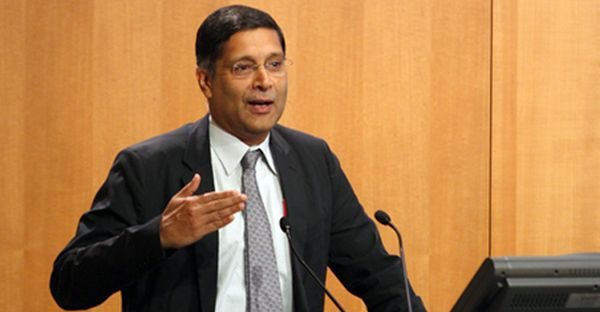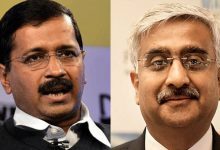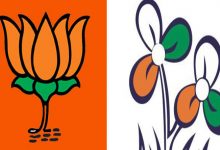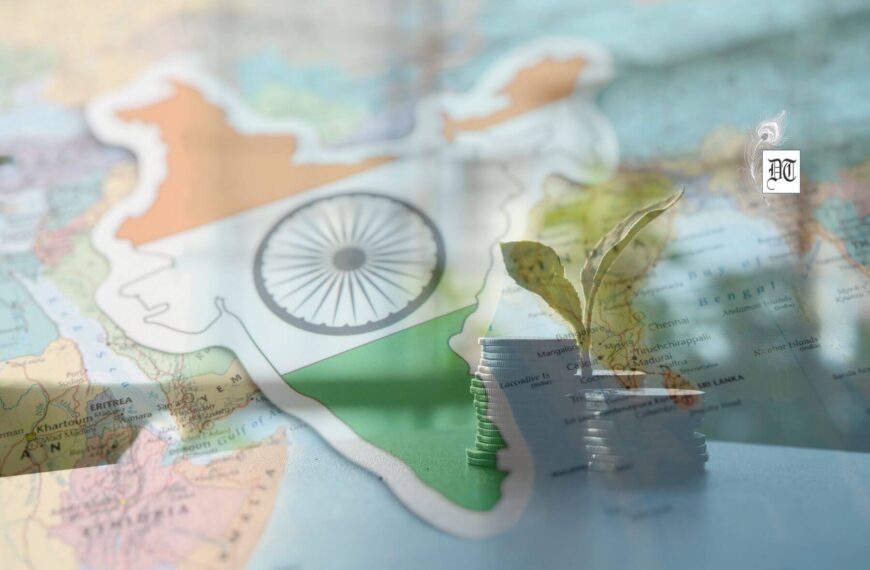Arvind Subramanian, the CEA, does not feel shy in admitting that he failed to respond to the decay, though he was aware of it. It is indeed shocking to know from him that he knew that some problems were brewing up in BoB and SBI and these banks were facing some issues. Being the CEA he ought to have acted the moment he came to know. Here’s an analysis, for Different Truths.
The Chief Economic Adviser (CEA) Arvind Subramanian was correct in his observation that internal controls and external regulatory systems in public sector banks have broken down. But what is really disturbing and at the same time scandalous is his assiduous silence on identifying the nature of the Rs 11,500-crore Punjab National Bank fraud.
Of course, he did speak on the scam but only after 5 days of the expose. His opinion, nevertheless, did not reflect his or the Modi’s government concern. Instead, it looked like coming from the mouth of a politician out to defend his benefactors: “The problem has been festering for a long time and it is not just the PNB alone; there are issues with the Bank of Baroda and State Bank of India, too. We have to look at how to improve internal controls and consider whether it has anything to do with the ownership”.
The CEA does not feel shy in admitting that he failed to respond to the decay, though he was aware of it. It is indeed shocking to know from him that he knew that some problems were brewing up in BoB and SBI and these banks were facing some issues. Being the CEA he ought to have acted the moment he came to know. However, the moot question is when did he come to know? Who brought this to his knowledge? How could a person entrusted with the task of managing and monitoring the economy of the country fail to perceive this nature of fraud? What was his first reaction? True enough the nature and design of the scam smacks of something awful and dubious happening in the country’s banking system.
This scam has not turned the PNB bankrupt. But the modus operandi has been similar to the mechanism that turned Lehman bankrupt. As the scam was taking place over the months, it is surprising how it evaded the eyes of the bureaucrats and top bankers? Obviously, it implied that the bank became a victim of the tacit understanding between the officials and politicians.
There is no denying that it was the sound Indian banking system that had saved the country’s banking and the economy in 2008, at the time of Lehman’s bankruptcy. The Indian banking system is so strong that no scam could take place. Whether it was Mallya’s case or the Nirav scam, a closer look at reveals that the banks were simply looted with the connivance of the bankers under the watchful eyes of the politicians.
Significantly, even Subramanian admitted that he scams “do not happen in public sector banks alone as most scams worldwide had happened in what was considered the best of private sector banks, but here we have the PSBs”. Subramanian was quite sure that the magnitude of bad assets (non-performing assets) of various banks could easily be 25% to 35% more of what had been disclosed in public.
In the wake of the exposure of the irregularities committed by Mallya and siphoning off crores of money from the banks, the Modi government had promised to initiate banking reforms. But the finance minister forgot his assurances. Once again in the wake of PNB expose, the issue of reforms is being raised. Some have even suggested that the ownership of the banks be handed over to the private sector. Their views were also shared by the CEA. Subramanian said:”We have to consider what to do with the banks’ ownership, whether they should be privatised totally or they should have private sector participation”.
Some leading industrialists, like Adi Godrej, have even pleaded for privatisation of the banks. Their logic is “no fraud takes place in the private banks.” A closer look will unravel the truth that the industrialists and corporate houses have been committing this kind of frauds. A common citizen cannot play a fraud on the bank even for one crore rupees. But the banks will be too obliged to allow the rich to defraud them. An insight into the total value of NPA will testify this. The logic that privatisation is the panacea for the scam-malaise is ridiculous.
The private sector, the industrialists, and their political godfathers have been using these scams to establish that nationalisation of banks by Indira Gandhi was a wrong move. They now want a process of virtual de-nationalisation of PSU banks, at least at the operating level.
Going by RBI statistics, PSU banks reported loan frauds of Rs 61,260 crore over the last five years. Add the recent Nirav Modi scam and the number swells to Rs 73,000 crore. One thing is absolutely clear that a large part of the current bad loans owes to the fraudulent deals struck by corrupt bankers in collusion with crooked businessmen. They have been taking kickbacks to sign off loans worth hundreds of crores, well aware of the fact that the money won’t come back.
Seventy percent of India’s banking system is still in the public sector. For Indian businessmen, the first door to the fraud is through the employees of the banks. Then there are powerful bureaucrats to exert the required pressure, with politicians patronising them. It is ridiculous to suggest that this is the handiwork of only a handful of unscrupulous employees.
If media reports are to be believed, Mehul Choksi and Nirav Modi used the services of a deputy manager and some junior employees of PNB to defraud the bank. The deputy manager repeatedly issued fraud banking instruments called Letters of Undertaking (LoU) in favour of their firms. Astonishingly the man remained at the same post for seven years. Most of the LoU-based transactions occurred outside PNB’s core banking system (CBS), which tracks every debit and credit for all PNB accounts across the globe and reconciles these on a daily basis. A LoU is a sound instrument through which a bank on behalf of a customer undertakes to honour a payment made by another bank for imports by its client.
The moot question is: why were these LoUs repeatedly issued without any margin money? Moreover, any LoU sent to an overseas bank is automatically acknowledged. How could these acknowledgments disappear? If Nirav Modi had paid in full on the due date against every LoU issued, then no fraud would have taken place. He didn’t because he was expanding his business too fast, and needed more and more stones. The audacity of Nirav in questioning the bank’s action simply manifests his daredevilry and the political patronage he commands.
Arun Srivastava
©IPA Service
Photos from the Internet
#RBI #BankControl #PrivateSector #ModiGovernment #IPA #DifferentTruths





 By
By

 By
By
 By
By